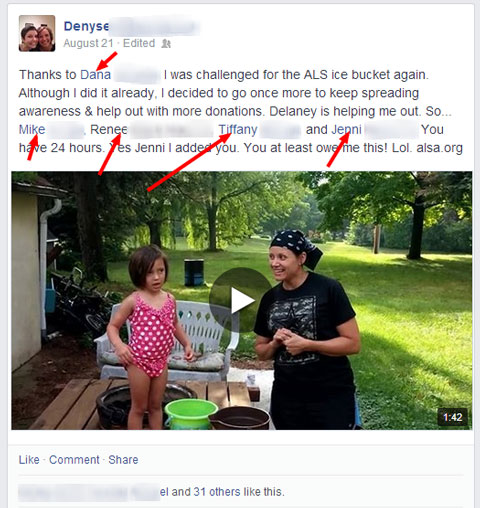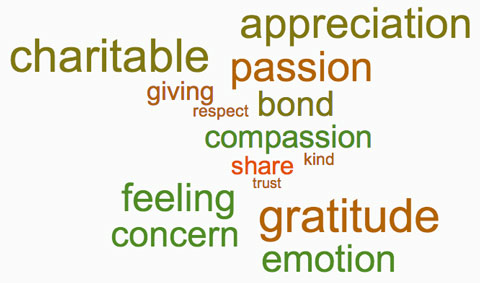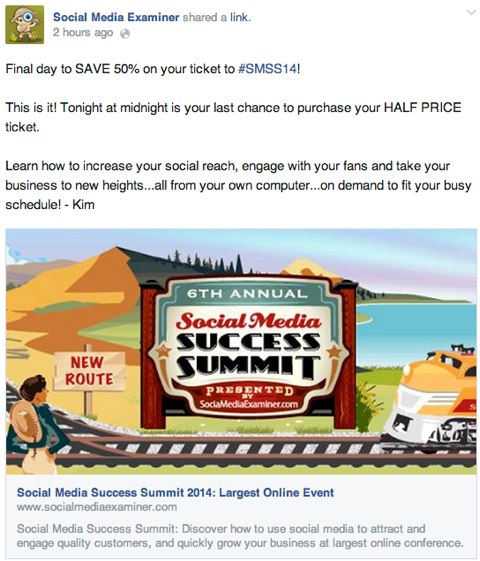Are you planning a social media campaign?
Do you wonder why some marketing campaigns are more successful than others?
The recent ALS Ice Bucket Challenge went viral because they used powerful psychological concepts to influence participation.
In this article I'll share the concepts ALS used to achieve overwhelming success and how you can use them.

#1: Appeal to Indirect Public Commitment
We are more likely to act on and complete a task when we promise ourselves we'll do it. The obligation is amplified when we make a commitment publicly—we put even more pressure on ourselves to follow through so we don't risk both personal and public letdown.

The ALS Association used this concept in a somewhat different (but equally effective) way: participants weren't making the commitment themselves; the person nominating them was publicly making the commitment for them. This form of peer pressure makes the nominated person feel morally obligated to accept (commit) and follow through.
How You Can Use It
Take a step back and look at your campaign to see if there are opportunities to ask people to make a public commitment.
For example, if you're hosting a free event and are afraid people will sign up but not show up, add an extra step after registration asking them to share their activity on their social networks. Their public commitment increases the likelihood that they'll show up.
#2: Question Personal Identity
Each of us has a set of characteristics we use to describe who we are as individuals. Collectively these characteristics are called your personal identity. Identity is all about perception—how you perceive yourself and how others perceive you.
Most people hold these characteristics as part of their identity: kind, giving and charitable. The ALS Association challenged people to be consistent with those characteristics as a way to influence their actions.

The Ice Bucket Challenge was essentially saying, “You see yourself as charitable [an assumption] and if you are in fact charitable, you will do this. Otherwise you've shown that you are not charitable.” In situations like this, people choose to participate rather than challenge their identity.
How You Can Use It
Take a look at your campaign's audience. Break down the characteristics that define the group's overall personal identity, and then use those to influence action. Call out the characteristics they identify with and tie them to your product or service:
“If you're the type of person who appreciates creativity, rarity and perfection [identity characteristics], our new Imperial Court Wood Sofa [your product/service] will speak to you.”
Get World-Class Marketing Training — All Year Long!
Are you facing doubt, uncertainty, or overwhelm? The Social Media Marketing Society can help.
Each month, you’ll receive training from trusted marketing experts, covering everything from AI to organic social marketing. When you join, you’ll also get immediate access to:
- A library of 100+ marketing trainings
- A community of like-minded marketers
- Monthly online community meetups
- Relevant news and trends updates

Discover Proven Marketing Strategies and Tips
Want to go even deeper with your marketing? Check out the Social Media Marketing Podcast! Publishing weekly since 2012, the Social Media Marketing Podcast helps you navigate the constantly changing marketing jungle, with expert interviews from marketing pros.
But don’t let the name fool you. This show is about a lot more than just social media marketing. With over 600 episodes and millions of downloads each year, this show has been a trusted source for marketers for well over a decade.
Those who identify with the characteristics of creativity, rarity and perfection are drawn to the sofa because they want to reinforce their identity.
#3: Create Exclusivity
Although anyone could have participated, the ALS Ice Bucket Challenge created two groups: those who were invited to participate and those who were not. This invitation-only tactic builds a level of exclusivity around those who were invited—it's as if they're now part of the club.

When something is exclusive, limited or rare, it has greater influence on our actions. People who were invited to participate in the ALS challenge were compelled to act because they subconsciously wanted to be a part of this exclusive club and say, “I did the Ice Bucket Challenge.”
How You Can Use It
In addition to invitation-only events, marketers commonly create a sense of urgency and exclusivity by limiting the number of items available and the amount of time they are accessible.
The invitation-only tactic is easy to implement, but it's a long-term commitment because it usually takes a great deal of time and effort to get the ball rolling.
Create an invite-only group on the social network you and your audience use most. Start off by inviting a mix of industry experts, and then publicly promote the group. At the same time, show members the group's value and explain what others need to do to be invited to join.
I suggest making the requirements somewhat difficult in order to retain exclusivity and thus the appeal of being included.
Another idea is to offer a limited number of items to dramatically boost the urgency to act. People don't want to feel like they're going to miss out, so having a limited quantity of something may be the extra push your customers need to take action.
Post something on Facebook saying, “The first X people who message [or like, or share] us will get access to Y.” Continue to update that same post with a running tab of how many items are left.
Similarly, limiting how long a product or service is available is a powerful way to influence behavior.

Let's say you're an NFL merchandise e-commerce shop. You develop a promotion that runs for the entire football season where whichever team is ahead, their merchandise is 10% off during the game. Once the game is over, the promotion ends.
Twitter would be a good channel for a campaign like this. You could give score and game-time updates as a countdown, adding pressure to make purchases before the game ends.
Conclusion
The ALS Association leveraged basic psychological concepts to drive hundreds of thousands of people to take action and spread the word about their cause. Whether you were a participant or a skeptic, there's no question that the Ice Bucket Challenge was a marketing smash and exceeded the organization's expectations.
Now that you have an understanding of these concepts and how to apply them, it's your turn. Find creative ways to bake them into your next campaign and you'll see the influence you have on others.
What do you think? Have you used any of these social psychology tactics in your campaigns? Which ones worked best for you? If you have any questions or comments, please leave them below!
Render of silver stantions and a red carpet from Shutterstock.
Attention Agency Owners, Brand Marketers, and Consultants

Introducing the Marketing Agency Show–our newest podcast designed to explore the struggles of agency marketers.
Join show host and agency owner, Brooke Sellas, as she interviews agency marketers and digs deep into their biggest challenges. Explore topics like navigating rough economic times, leveraging AI, service diversification, client acquisition, and much more.
Just pull up your favorite podcast app, search for Marketing Agency Show and start listening. Or click the button below for more information.


